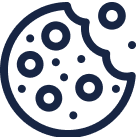/ Glossary /
Target AudienceWhat is a Target Audience?
How to define your Target Audience?
Imagine the type of person who would be interested in buying your products and services. Start creating a customer persona based on the demographic, psychographic, and behavioral information of your ideal customers, so you can better understand the demands of your target audience.
Ask yourself some questions:
- Who is most likely to purchase my product or service?
- What are their age, gender, income, and education levels?
- What are their interests and hobbies?
- Where do they live and work?
- What are their pain points and needs that my product or service can solve?
Once you have answered these questions, you can create a customer persona, which is a fictional representation of your ideal customer. This persona should include details such as age, gender, occupation, income, interests, and behaviors.
By creating this persona, you can visualize your target audience and tailor your marketing messages to speak directly to them.
How to reach your Target Audience?
Once you have determined your target audience, there are several best practices to follow when it comes to reaching them:
Use the right channels
Different audiences use different channels to consume content and make purchasing decisions. Make sure you are using the channels that your target audience is most likely to use.
Tailor your messaging
Use the customer persona you created to tailor your messaging to your target audience. Speak directly to their pain points and needs, and make sure your messaging is personalized and relevant.
Use data to your advantage
Use data analytics to understand your target audience’s behavior and preferences. This can help you create more targeted and effective marketing campaigns.
It's likely that your data is already being tracked if your company has a website, if you’re present on social media, or run digital ads. Numerous data analytics alternatives, including Google Analytics, which is a free tool, are readily available in all pricing ranges. On platforms like Facebook, Snapchat, and YouTube, social media analytics solutions already track all of your social media marketing activities automatically.
Keep an eye on the demographic data that shows up in your analytics. Is the target audience for your content what you were hoping for? If not, what can you alter to make them more appealing? By analyzing the data, you might gain knowledge about audiences you might not have previously thought about and improve your target market.
Test and refine
Continuously test and refine your marketing messages to ensure that they are resonating with your target audience. Use A/B testing and other tools to experiment with different messages and see what works best.
Keep an eye on the competition
Even though you probably don't have access to their internal statistics or marketing plans, you may still gain a lot of knowledge by observing the things they do effectively and conducting some simple market research and social listening.
For instance, have a look at their social media profiles. Who responds to their posts? What keywords are they utilizing, and how might those aid in drawing in particular demographics? What additional accounts do they follow? By providing the answers to these questions, you can gain important knowledge about the target markets of your rivals and choose whether you want to pursue the same customers.
Highlight your competitive advantages
Make a list of all the advantages your customers will experience as a result of the qualities your product or service delivers. Include all the ways your product or service can benefit a client and the needs it can aid in addressing. Finding the advantages of your good or service will help you locate the people who would benefit from it most — your ideal clients.
Why is the Target Audience important?
You can provide an experience that appeals to each individual you want to target only by knowing what your consumers need. Therefore, identifying your target audience is one of the first steps in developing a marketing strategy and producing content because it ensures that the correct people will receive your message.
By focusing your marketing efforts on a specific group of people, you can make your messaging more personalized and relevant. This can result in higher conversion rates and better return on investment (ROI) for your marketing campaigns.
When you know who your target audience is, you can create messaging that speaks directly to them. This can help your messages cut through the noise and stand out in a crowded marketplace.
Targeting a specific group of people also means that you can allocate your marketing resources more efficiently. Instead of casting a wide net and hoping to catch something, you can focus your efforts on the people who are most likely to convert.
Similarly, when your messaging resonates with your target audience, they are more likely to become loyal customers. This can lead to repeat business and positive word-of-mouth recommendations.
Knowing your target audience will enable you to make well-informed choices for your online store, tailor your messaging, and use data to your advantage, so you can reach the right people with the right messages and achieve better results.
Table of contents
Send better and affordable emails today
Grow your business with a powerful loyalty program and email marketing features
Get started for freeAlready have an account? Sign in
